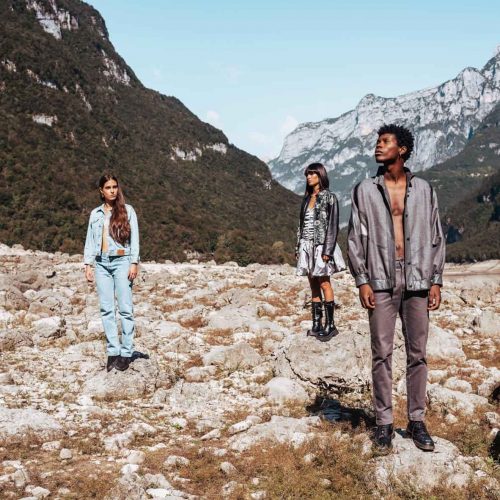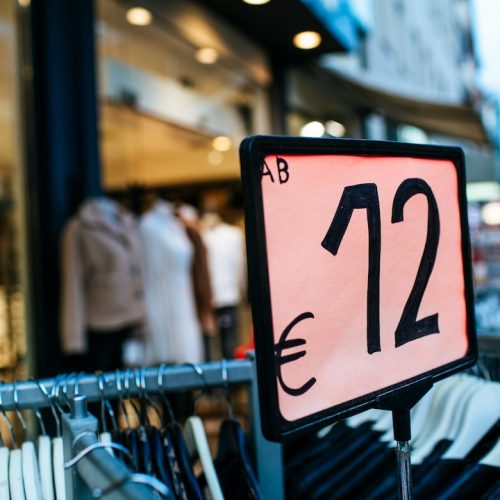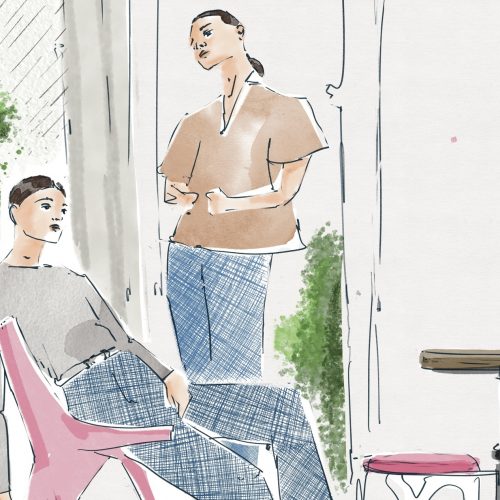Roundcouture | Creating More Conscious And Sustainable Fashion Industry
The fashion industry, hand in hand with technological progress, keeps seeking ways to reduce waste and achieve ecologically friendly apparel production. Find here one of the latest developments in sustainable fashion using lab-made materials and 3D printing.
Among the latest triumphs, such developments come to mind as textile from kapok tree, leather from apples, biodegradable materials and lab-made fabrics. Designers, influenced by growing percentage of clothing waste, collaborate with laboratories, searching for novel methods of making clothes. Just like that, where there is a problem, there are those who will find a solution. Creating biodegradable materials, without compromising on style, means new generation textile might reduce pollution, and stop filling up the land. As Bioplastic News says, “The biodegradable fabric sequin could last a lifetime in the wardrobe but breaks down with ease when exposed to a microbial environment such as compost-rich soil.”
If one started having doubts whether couture, appealing silhouettes, unique materials and bold prints could be created in any other way but known, old-fashioned methods of painting, sewing and beading, there should be no such. Laboratory textile production achieved tremendous results in 2D and 3D printing. From accessories to gowns, 3D printing becomes more and more accessible to designers. Often it is a more budget-friendly option to achieve the desired effect on a garment.
To understand where the fashion industry is heading in terms of sustainable production, lab-made materials, and 3D printing, we spoke to Paula Ulargui, a Madrid-based designer, whose new collection RoundCouture—in collaboration with FabLab Madrid—precisely reflects those attempts to raise awareness of our urgent need to move towards balanced fashion. The collection focuses on the implementation of bioplastics in the "haute couture" fashion, as the designer says. She created garments that reach harmony and agreement between sophistication, biodegradable materials and modern technologies.
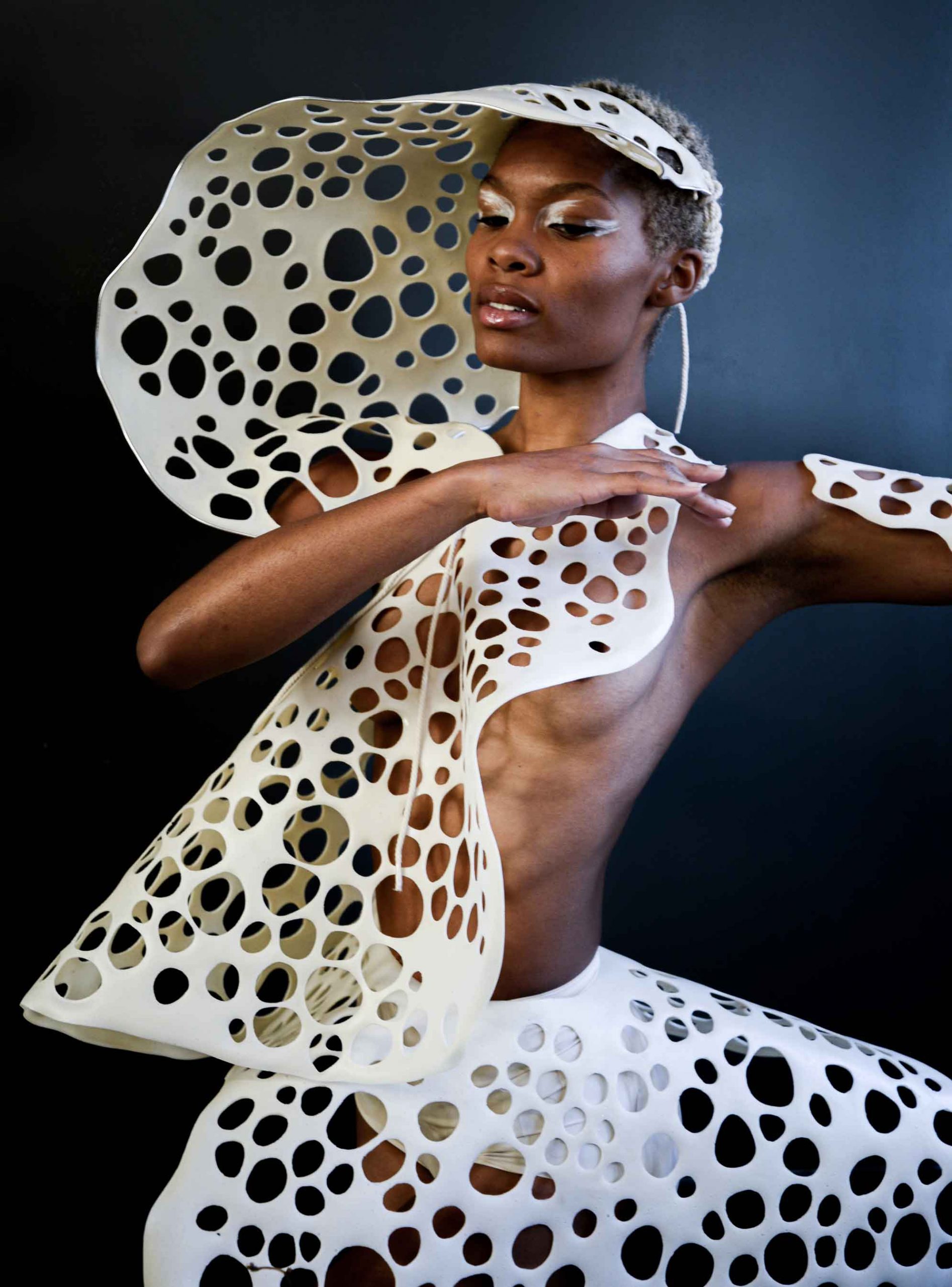
Paula, whatever it is you do, it seems you observe the clothing and fashion industry overall in a very innovative, almost astonishing way. Can you tell us more about the materials and techniques used for garments in ROUNDCOUTURE?
The aim of the RoundCouture project was to investigate the creation and manipulation of bioplastics and biomaterials that can serve as substitutes for silicone, latex, resin and many other plastics currently used in the industry.
This way, we created "Fabrics" from common ingredients such as glycerine, gelatine, agar or starches from different food (corn, potato, tapioca): ingredients that can be found in supermarkets and that behave in the same way as the plastic materials mentioned above. In addition, these new materials offer a large number of possibilities in terms of colour, texture, density and volume by means of small variations in the recipes. Once these fabrics had been created, the second step was to shape them. We designed 2D and 3D models to, through digital design techniques, achieve exquisite designs.
Our confinement has freed the environment from all the pollution we generate on a daily basis, showing the extent to which we are a burden on the planet's ecosystems.
How was FabLab involved in the process? Would you say that a collection of such extent requires not only a designer’s vision, but also chemical knowledge and meticulous research?
Of course! Without a doubt, my greatest luck has been to be able to count on a team of artists, designers and professionals from different sectors, creating a very stimulating and multidisciplinary team. Each one contributed an essential part to the project; previous knowledge in biomaterials, 3D modeling, pattern making and tailoring, etc. Without a doubt, I feel very grateful to have worked with all of them.
On the other hand, the FabLab of MediaLab Prado gave us the tools, machines and spaces to bring the project to reality.
Many designers nowadays speak about the positive changes that pandemic brought. They say of the lesser number of collections, better production, and smaller amount of waste. How would you predict the future of textile and fashion design in general?
Undoubtedly one of the positive aspects of this crisis has been that it has raised awareness towards sustainability. Our confinement has freed the environment from all the pollution we generate on a daily basis, showing the extent to which we are a burden on the planet's ecosystems. Since then, the number of companies and brands that have started to implement more sustainable materials and production methods has grown exponentially, something really good and much needed. Sustainability is no longer a brand value but a requirement, the challenge now is to maintain it and improve the processes and business models to make it equally profitable.
Comparing your Siamese Skins. Two Natures. One Body to ROUNDCOUTURE what else, what other idea drives your creativity other than a desire to create a more conscious, balanced and sustainable fashion industry?
I would say that the desire to create a more conscious and balanced industry is the goal. During the creative process of my projects, there are many things that inspire me: my environment, art, science, a painting or a beautiful view. It is true that nature has been, these last years, my great source of inspiration because, while working on researching it, I have discovered thousands of incredible things that have shaped both the conceptual and the aesthetic part.
Siamese skins, for example, is a project that is difficult to apply to a real industry. It is an ephemeral art concept that seeks to raise awareness of the aforementioned.
RoundCouture, on the other hand, does focus on finding a more sustainable materials that could be applicable to fashion but, without leaving aside that artistic/aesthetic inspiration.
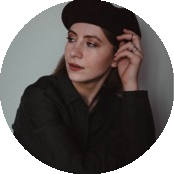
Maria Kossman is a creative writer, essayist and blogger based in Edmonton, Canada. Passionate about sustainable living, minimalism, traveling, and anything antique, she focuses on advocating life that is inspiring, mindful and elegant.

